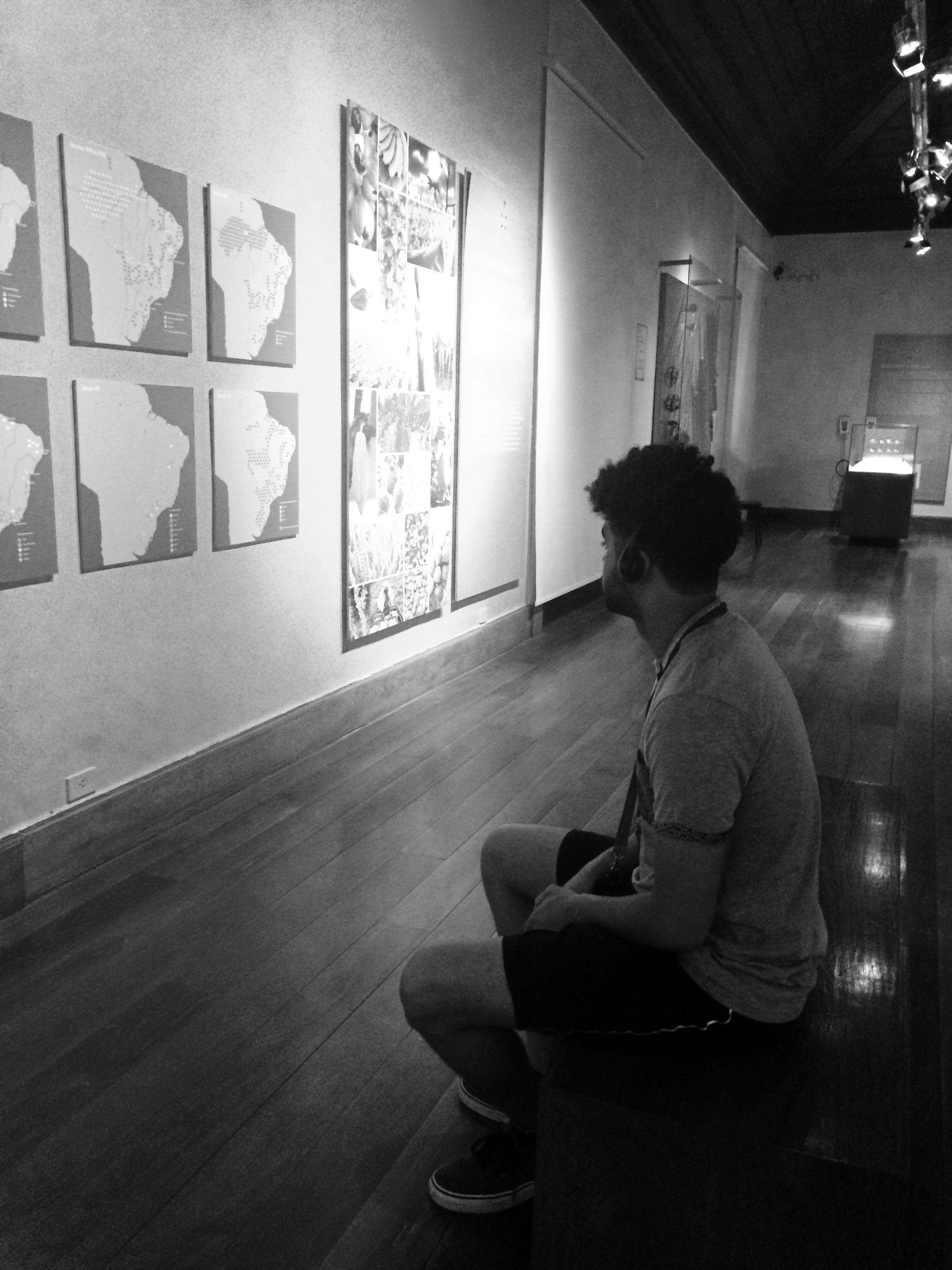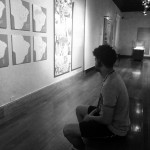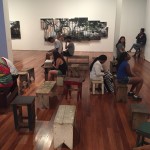May 27, 2015
By: Janel Pineda
Today, we began our tour of the city’s many museums—we learned about Brazilian history and artwork, in addition to continuing to immerse ourselves in Brazilian culture.
At 8:30 a.m., we dragged ourselves out of the hostel and proceeded to make our way to the bus stop. At the stop, an elderly Brazilian woman had a table set up with clothing and accessories for sale and told us that she had moved to Rio from the poorer northeast of Brazil with the hopes of gaining more economic security in the city. She made jokes about herself, specifically about her body and age, and wished us good luck as we continue with our travels. Her jokes were particularly striking, especially in relation to Donna M. Goldstein’s discussion of humor in the introduction to Laughter Out of Place: “humor is a vehicle for expressing sentiments that are difficult to communicate publicly or that point to areas of discontent in social life” (2013: 5). Like many others in Rio, this woman has lived a life of economic hardship, yet she chooses to make light of her circumstances through humor.
Prior to making our way to the museums, we discussed the films we had been assigned to watch before the trip began; thus, we had to confront American stereotypes of Brazil and reflect on how they aligned with our experiences. We also briefly discussed neocolonialism, neoliberalism, and capitalism as significant forces which contribute to the current state of poverty in a globalized world.
Upon our visit to the Museum of Natural History, we were able to trace the history of Brazil from its indigenous roots to its European colonization and thereafter, the expansion of slavery. The exhibit on Afro-Brazilian culture featured jewelry, dress, and the martial arts/dance form of capoeira. We proceeded to have lunch at the museum’s restaurant, The Line, during which we continued our discussion of Brazilian stereotypes.
On our way to the Art Museum of Rio de Janeiro, we stopped at the Candelaria church, which is known for the 1993 massacre of homeless children by police; this tragic event is a clear indication of the power imbalances and the stigma on those of the lower classes. As we made our way through the streets, careful to steer clear of the ongoing traffic as we crossed the road, we came across an alleyway shopping center. The class difference became very apparent here between the vendors we saw in this shopping center and the high-end shops at the mall we visited yesterday.
The Art Museum of Rio de Janeiro’s sixth floor allowed us to catch a glimpse of a huge urban project with Rio is currently undergoing, in an attempt to modernize the city. As we moved into the museum, one exhibit featured the artwork of Brazilian women and represented women from many different walks of life. Among the artists featured were Tarsila do Amaral’s paintings and Clarice Lispector’s stories. One of the most striking art installations was JR’s short film 28 Millimetres, Women are Heroes, Action in Morro da Providencia. The short film looked closely at the people living in favelas. It described the hardship and poverty, as well as the devastation of police violence based on racial profiling.
With broadened perspectives and tired legs, we returned to our hostel briefly before finishing off the night at the all-you-can-eat restaurant, A Mineira at which we were able to try a wide range of Brazilian foods.
—
Goldstein, Donna M. (2013) Laugher Out of Place: Race, Class, Violence, and Sexuality In a Rio Shantytown. University of California Press: Berkeley, CA.











